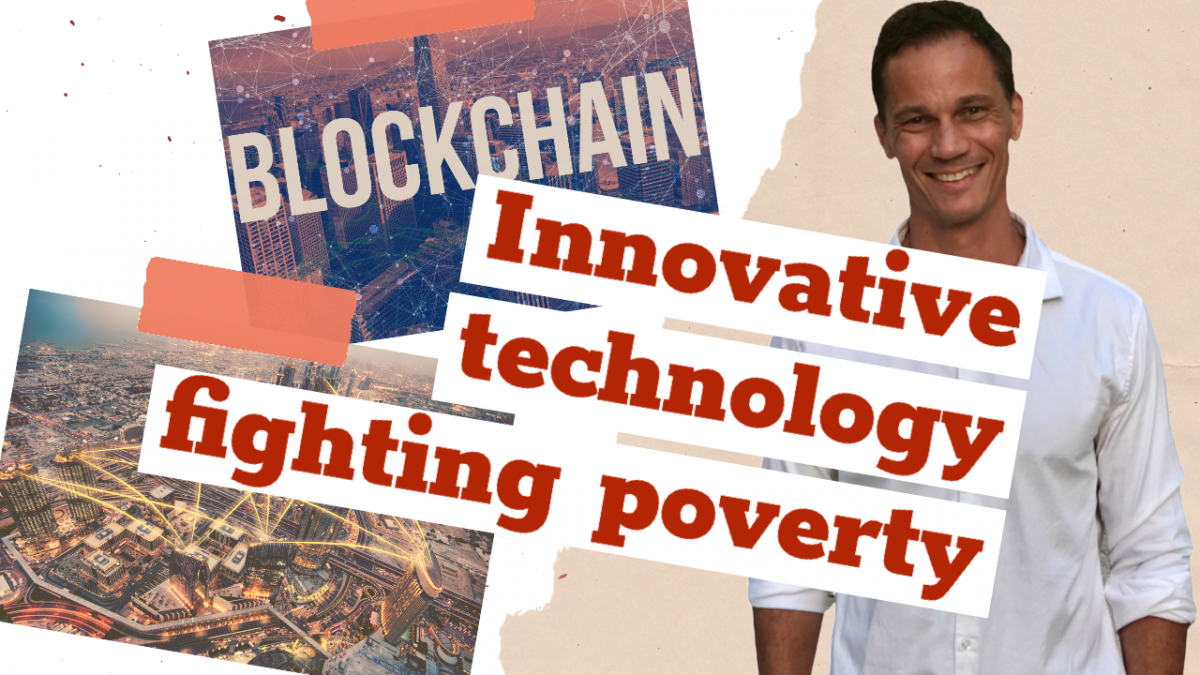Economic progress and technology are reshaping the world and solving social issues. Poverty is down and the fight continues. What can blockchain technology do to help people living in poverty?
Global economic and social developments in the last 20 years have been jaw-dropping. The number of people living in extreme poverty has dropped by half between 1990 and 2015 and most of this progress has been made in India and China. In fact, China has made historic contributions to the world by reversing the trend of increasing poverty. But 9 percent of the global population still live in extreme poverty and 80% of the world’s poverty-stricken people live in South Asia and sub-Sahara Africa. We still need all the help we can get to eradicate this human suffering.
Although there is no quick-fix to foster financial inclusion and provide financial opportunities for people living in poverty, blockchain represents a world-changing breakthrough. For community development to be effective it needs to impact both the individual and on societal level and blockchain technology is unique in its ability to provide innovative solutions on all levels. What tactics has potential to eradicate poverty, and how can blockchain technology be a part of that process?
Firstly, the unbanked need to be banked and people need better opportunities to fund small businesses with microloans. Secondly, social services need to be more effective in identifying individual needs. Moreover, women need to be in focus as they are more likely to experience poverty as they own less property and have less paid work and generally have lower levels of education than men. There are also clear links between land corruption and poverty.
Land corruption can involve brides during the land administration process, women being denied land rights, communities being excluded in land deals, people being evicted from their land and denied access to relevant information. Blockchain technology can solve major issues in the determination of land ownership. The process of managing records and determination of ownership is transparent and secure when conducted on a blockchain. It is also inclusive in the way information is accessible to the appropriate parties. The fact that blockchains are immutable is important to combat corruption as no one can change land ownership information on the blockchain without it following legal procedures. Blockchain technology can make the process of land ownership and the right of use quicker and cost-efficient and in turn assist in the creation of a trustworthy system that lower the risk of poverty. Suddenly ownership of a parcel of land is reliable.
There are approximately 1.7 billion unbanked people in the world and most of them are women. FinTech companies have potential to provide banking services for the unbanked and help to solve the problem with financial inequality.
Blockchain technology and cryptocurrencies have led to the development of new models for micro-lending from developed countries to entrepreneurs in developing countries. Conventional money transfers are expensive and slow and is therefore not able to meet individual needs. This leaves people with limited financial resources outside of the traditional banking system and entrepreneurial dreams are crushed by lack of funding. Blockchain technology have made it possible to send small amounts of money across borders with little or no fees.
We have all heard stories of corrupt leaders use foreign aid to fund criminal activity or to enrich themselves. In today’s aid system funds cannot be traced from end-to-end creating potential for mismanagement and decreasing accountability. One very interesting project is Disberse, who worked with United Nations Office for the Coordination of Humanitarian Affairs and other major donor organizations to track aid on the blockchain. Sadly, Disberse had to be cancelled after the pilot phase, but the idea of the project was ground-breaking. Blockchain technology open a lot of doors and allow new ways of doing business and to solve societal problems, but projects also need to function on all levels of delivery. The final report of the project sends us a message; “Remember that technology is a means to an end, not an end in itself.” The Disberse website is now a hub for learning resources and a valuable source for future projects with similar focus.
Social services can also be improved with the use of blockchain technology. Researchers have identified ways to use blockchain technology to identify the needs of vulnerable and needy populations and manage the follow up of the situation. This could be used to effectively and securely track and support people who receive social benefits or micro-loans and evaluate if the quality of life of the beneficiaries improves.
In many ways using blockchain technology to fight poverty is a way to reach the individual but also to limit human interaction in transactions and providing a trustworthy platform for services. Unfortunately, human interaction in financial processes make room for fraud and corruption and the traditional financial system is expensive and slow and not built to address financial inequality. Lessons from using blockchain technology to fight poverty tell us that technology is not the complete solution. We obviously need sound business models and the appropriate skillset. The successful social entrepreneur that uses blockchain technology and aims to fight poverty is likely to be a project that assists women living in poverty with optimized social services, targeted educational initiatives and microloans.

